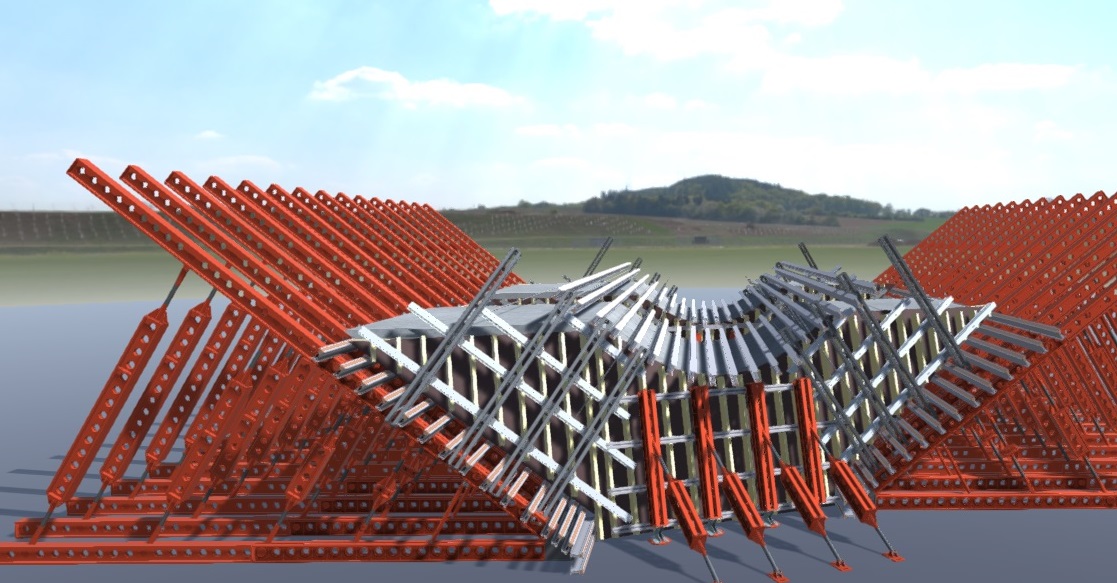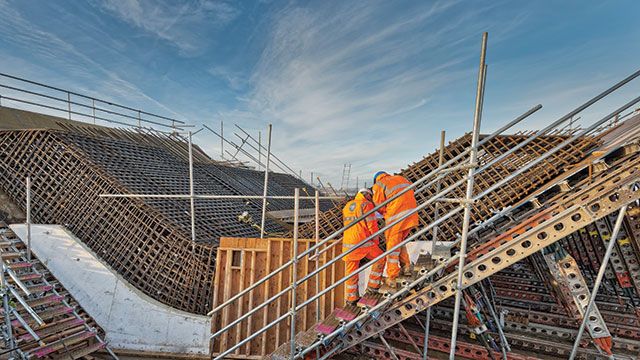The English city of Ely in Cambridgeshire has established a 1.7km single carriageway Bypass made with the support of additive manufacturing technologies.
VolkerFitzpatrick, the principal contractor of the Ely Bypass project, RMD Kwikform, a West Midlands formwork and shoring solutions provider, and Sword Construction UK, a civil engineering contractor, constructed the new viaduct (a bridge made of multiple spans) with ‘V’ shaped piers, using 3D printed prototypes and a 3D visualization tool.

The Ely Bypass
Cambridgeshire County Council commenced the construction of the Ely southern bypass in 2017 to ease congestion in and around the small city of Ely. The bypass, which is valued at £49 million, provides a new road connecting to the A142 – where Suffolk and Cambridgeshire link. Congestion in this area is caused due to its proximity to Ely train station which has reportedly caused queues of up to four miles. VolkerFitzpatrick sought Sword Construction and RMD Kwikform to support the construction of the 300-meter long viaduct bridge to remedy traffic.
“With each pier being built within a cofferdam [a watertight dry enclosure which permits construction], space was always at a premium. During discussions aimed at reducing load pressures on the cofferdam, we came to the conclusion that the best solution was to pour the V piers in two separate pours,” added Hawkesford.
“Tying through the face of the structure wasn’t permitted and was not possible on the internal faces; so, conducting two separate pours allowed us to keep the amount of propping to a minimum within the footprint of the cofferdam.”

3D visualization with LocusEye
RMD Kwikform’s 3D visualization tool, LocusEye, helped to better understand the tolerances and the movement of equipment on the V-shaped piers, as well as its complex structure. This led the contractors to create over 120 different drawings highlighting the varying dimensions and curvature of the structure. These designs were then 3D printed into models of the bypass, to aid in visualization.
Speaking of the complications with the design, Ian Hawkesford, Engineer at RMD Kwikform, explains, “One of the biggest challenges was forming the piers, due to the offset nature of each side of the V. The stop ends are not perpendicular to the main formwork, which creates issues when it comes to tying the stop ends in place.”
Luke Daley, Contract Manager for Swords Construction, added, “The V piers are very unusual and challenging, but RMD Kwikform has shown its expertise in developing a solution for the safe construction of the V Piers and bridge.”
The Ely Bypass has now been open to traffic for four months.
Voting for the 2019 3D Printing Industry Awards is now open. To see if your nominations made the shortlist, and to help decide this year’s winners, place your votes now.
For the latest additive manufacturing construction news, subscribe to the 3D Printing Industry newsletter, follow us on Twitter and like us on Facebook.
Looking for a career in additive manufacturing? Visit 3D Printing Jobs for a selection of roles in the industry.
Featured image shows the 3D visualization of the Ely Viaduct. Image via RMD Kwikform.

